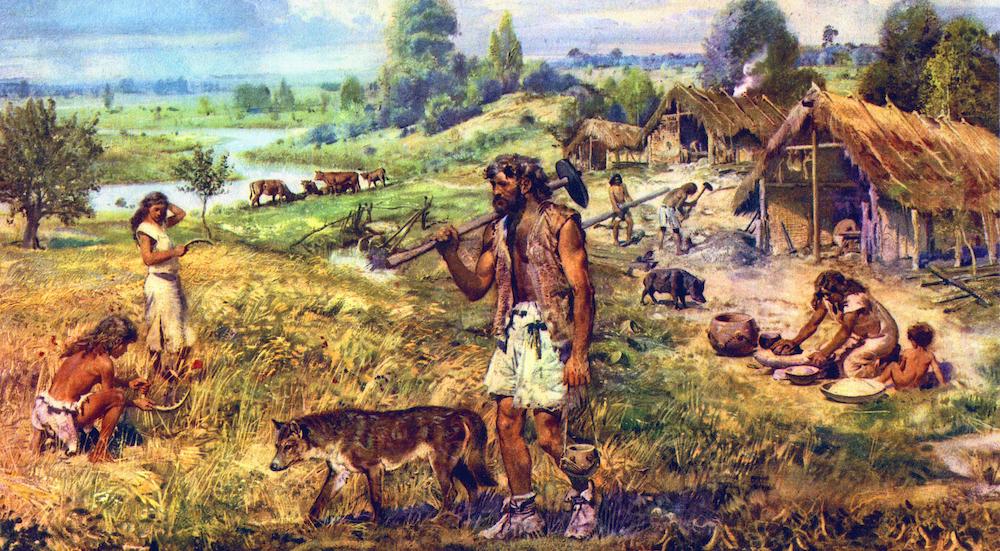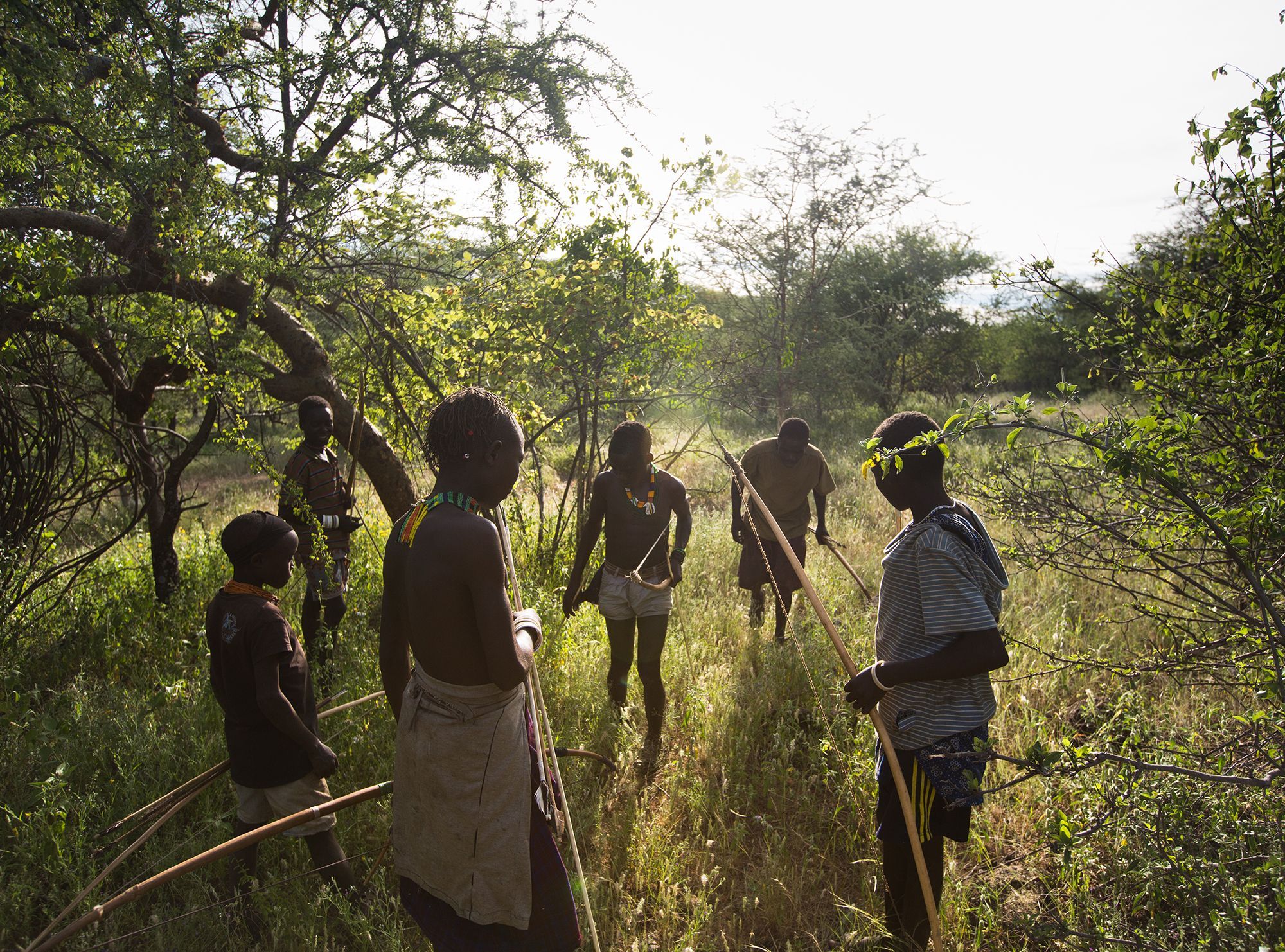Which Best Describes Hunter-gatherer Economies
Person who gets food by using a combination of hunting fishing and foraging. Way of living including cultural economic and social habits.

New Study Identifies Neanderthal Ancestry In African Populations And Describes Its Origin Archaeology News Ancient Humans Human Dna
Thus foraging is a technique of collecting wild plants and pursuing wild animals for their survival and development.

. The returns from diversifying production across multiple industries O B. It was a wartime economy. K - University grade.
Generalized reciprocity is the dominant form of exchange in hunter-gatherer societies A major characteristic of hunter-gatherer societies was their ability to produce food surpluses. Of the following statements which best describes the lives of nomadic hunter gatherers Items like tools and shelter were made so that they were easy to carry when the clans moved around Civilizations that emerged in Mesopotamia relied on the locations natural and mineral resources for survival including. The returns from building larger products that.
Generalized reciprocity is the dominant form of exchange in hunter-gatherer societies In hunter-gatherer societies specific occupational specialization was based on. They had mixed agricultural and hunter-gatherer economies that favored the development of permanent villages. 1Which of these is MOST associated with the Neolithic Era.
At the global scale conceptions of hunter-gatherer economies have changed considerably over time and these changes were strongly affected by larger trends in Western history philosophy science and culture. Which term BEST describes the lifestyle of hunter-gatherers. Which of the following best describes the economy of the 1920s in the United States.
The Teotihuacán people were seminomadic hunter-gatherers while Maya society involved a complex social structure within cities. Farming competed with hunting and gathering practices. Following the invention of agriculture hunter-gatherers who did not change have been displaced or conquered by farming or pastoralist groups in most parts of the world.
Hunter-gatherer societies stand in contrast to the more sedentary agricultural societies which rely mainly on cultivating crops and raising. Which is the most likely reason that hunter-gatherers began farming. Teotihuacáns economy was based on its elaborate agricultural system but the Maya relied on trade to obtain food from their allies.
They had mixed agricultural and hunter-gatherer economies that favored the development of permanent villages. A hunter-gatherer is a human living in a society in which most or all food is obtained by foraging collecting wild plants and pursuing wild animals. 1 point It was a period of economic hardship.
The Spanish should require less tribute after conquest to. First Quarter Benchmark DRAFT. Economic and public affairs.
Which of the following best describes evidence used by Crosby to support his argument about the change in Native American populations after 1492. Which statement best describes a result of the development and use of metal coins in ancient Greece. Their daily lives were highly documented by scholars.
Hunter-gatherers relied on a narrower variety of foods compared to grain producing agricultural. Agriculture was an important part of the economy. Part 1 5 points Which of the following best describes economies of scale.
Seen as either savage or noble at the dawn of the Enlightenment hunter-gatherers have been regarded as everything from holdovers from a. The nomadic hunter-gatherer groups owned few possessions and probably had no concept of private property. Which description best characterizes the economies of Paleolithic hunter-gatherer societies.
The returns from education O D. They were nomadic peoples who utilized river systems to move throughout the region. The gender-based division of labor enforced a stratified society where women performed most of the work.
Question 1 of 3 Select the boxes in the table to show whether each statement about prehistoric hunter-gatherers is true or false. In contrast to many hunter-gatherer economies the modern industrial system generates scarcity by creating unlimited wants. The returns from large-scale production processes O C.
4The discovery of agriculture around 8000 BCE would lead to which of these. Rome had no significant social problems and everyone was. It was a boom time or a period of great economic growth.
The rise of hunter-gatherer civilization. Economics questions and answers. True False were nomadic built permanent dwellings irrigated and farmed the land developed the use of.
3Which statement BEST describes hunter-gatherer societies. The development of farming led to more hunter-gatherer groups. Which of the following best describes an argument made by de Gante in the letter.
200000 years ago-present species of primates hominid that only includes modern human beings. 2What human advancement led to the formation of villages. A hunter-gatherer is a human living a lifestyle in which most or all food is obtained by foraging gathering edible wild plants and hunting pursuing and killing of wild animals in the same way that most natural omnivores do.
Hunter-gatherers have few material possessions but much leisure time and arguably a richer social life than the affluent of the industrialized North. A hunter-gatherer economy is a type of economy where humans are widely dependent on the method of foraging for the collection of food. Which statement best describes hunter-gatherer societies a the women tended to do all of the hunting jobs b they were nomadic societies who were small in number c their farming methods were adapted by later societies d they tended to.

Modern Parents Could Learn A Lot From Hunter Gatherer Families Literary Hub

What Is A Traditional Economy Traditional Economy Economy Lessons Economies Of Scale

Comments
Post a Comment